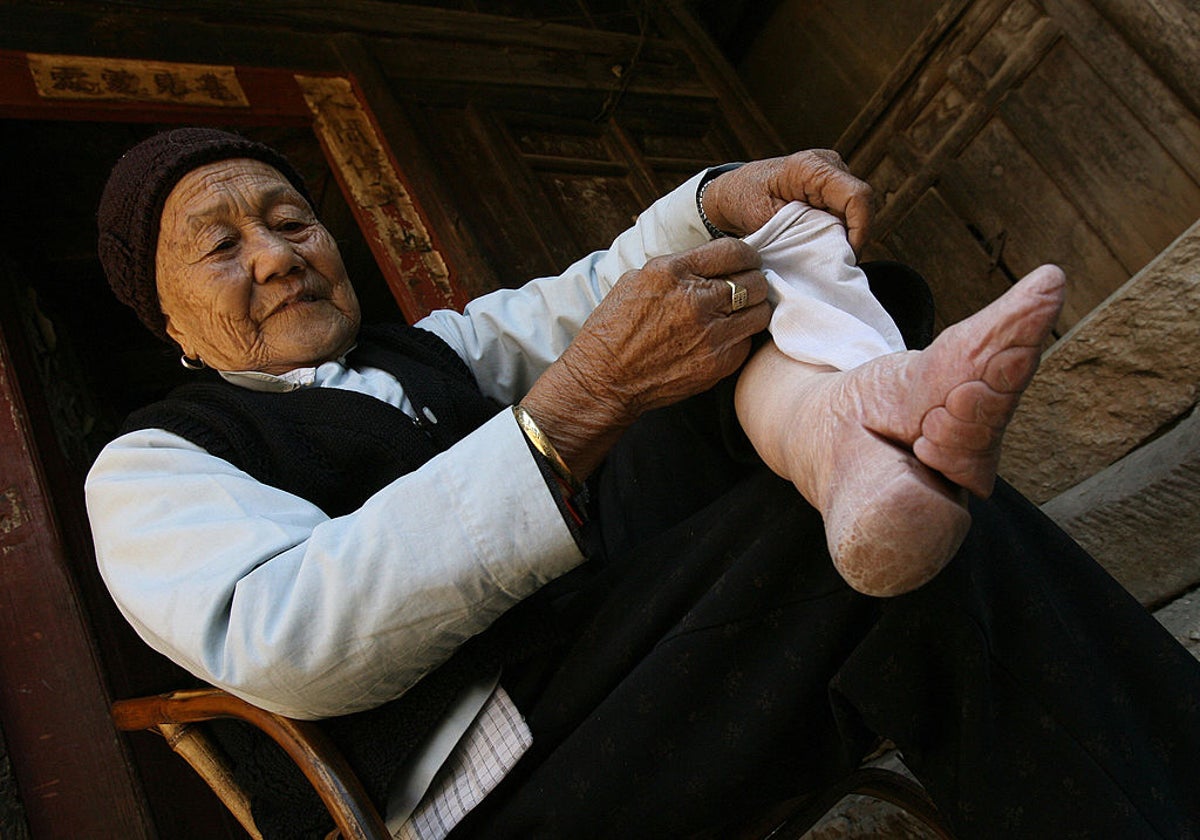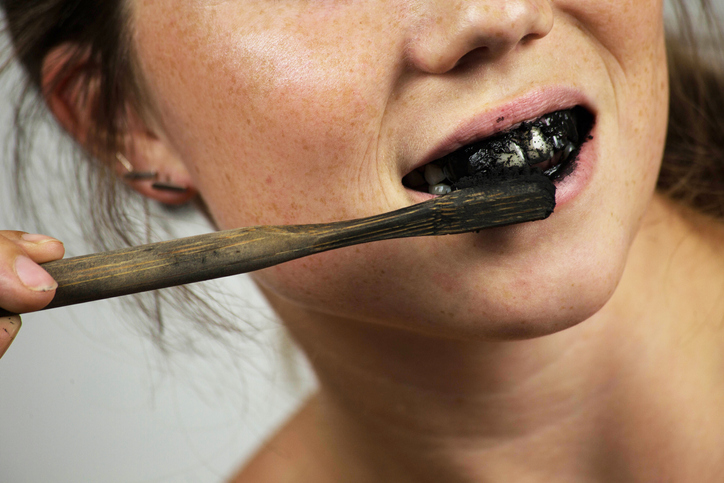Weirdest Ancient Beauty Practices From Around the World
Throughout history, beauty has been an evolving concept, shaped by cultural beliefs, societal norms, and individual preferences. However, what was considered beautiful in ancient times often defies modern understanding.
From extreme body modifications to peculiar rituals, ancient beauty practices reflect not only a desire to enhance physical appearance but also deeper cultural meanings tied to status, spirituality, and health.
This exploration of the weirdest beauty practices from around the world reveals the lengths to which humans have gone to achieve their ideal vision of beauty.
Ancient Egyptian Cosmetics and Deadly Lead Makeup
 Ancient Egypt is widely regarded as the birthplace of many beauty rituals that are still echoed in today’s world, but some of their methods were far more dangerous than they seemed.
Ancient Egypt is widely regarded as the birthplace of many beauty rituals that are still echoed in today’s world, but some of their methods were far more dangerous than they seemed.
Egyptian women and men alike were known for their love of heavy makeup, particularly their iconic use of kohl eyeliner to accentuate their eyes.
What many didn’t realize at the time was that the kohl they used often contained lead, a toxic metal that could cause serious health issues, including skin damage and lead poisoning.
- Kohl was believed to protect the wearer from the "evil eye" and also had medicinal uses, despite its toxic properties.
- The use of malachite and galena to create green and black eyeshadows was also popular, with both materials believed to have protective spiritual benefits.
The Egyptian obsession with aesthetics also extended to skincare. Wealthy Egyptians used concoctions made of animal fats, oils, and herbs to soften the skin and maintain a youthful glow.
However, some of these mixtures included ingredients such as crocodile dung—a bizarre addition by modern standards, but believed to have regenerative properties at the time.
Chinese Foot Binding: The Pursuit of Tiny Feet
 Perhaps one of the most extreme and painful beauty practices in history, Chinese foot binding was a custom that lasted for nearly a millennium.
Perhaps one of the most extreme and painful beauty practices in history, Chinese foot binding was a custom that lasted for nearly a millennium.
Beginning as early as the 10th century during the Song Dynasty, foot binding involved tightly wrapping young girls’ feet to prevent growth, leaving them with small, misshapen feet known as lotus feet.
- The ideal foot length was considered to be about three inches. The smaller the feet, the more desirable the woman was considered in society.
- This process involved breaking the toes and arch of the foot, which caused excruciating pain and made walking difficult, if not impossible.
Despite the painful nature of the practice, bound feet were seen as a symbol of wealth and status, as only women from affluent families could afford not to work and thus maintain such a physically limiting beauty standard. Foot binding was officially banned in the early 20th century, but its impact on Chinese beauty standards lingers in historical memory.
Mayan Cranial Shaping and Dental Modifications
The ancient Mayans practiced some of the most unique and bizarre forms of body modification, aimed at achieving their cultural ideals of beauty.
One of the most striking examples is cranial shaping, a process that involved deliberately elongating the skull of infants by pressing it between two boards.
This practice was reserved for the elite and was considered a marker of beauty, intelligence, and higher social status.
- Cranial shaping typically began shortly after birth, while the skull was still malleable, and could result in a dramatically elongated forehead by adulthood.
- This practice was not seen as harmful but was deeply intertwined with the Mayan worldview, in which physical appearance was linked to spiritual beliefs.
Dental modification was another beauty trend among the Mayans. Wealthy individuals would embed their teeth with precious stones like jade or turquoise, and some would even file their teeth into pointed shapes. This extreme form of dental artistry was both a sign of status and a representation of their connection to the divine.
Japanese Ohaguro and Blackened Teeth
 While many cultures throughout history have prized white teeth as a sign of health and beauty, ancient Japan held a completely different standard.
While many cultures throughout history have prized white teeth as a sign of health and beauty, ancient Japan held a completely different standard.
The practice of ohaguro, or tooth blackening, involved applying a lacquer made of iron filings, vinegar, and tea to the teeth, turning them a glossy black.
This custom, popular during the Heian and Edo periods, was practiced primarily by aristocrats and married women.
- Ohaguro was seen as a sign of maturity and beauty, with blackened teeth considered more refined and elegant than bare white teeth.
- The practice was also believed to protect the teeth from decay, making it both a cosmetic and health-related ritual.
Ohaguro fell out of favor in the late 19th century, following Japan's modernization efforts, but for centuries, it remained a beauty ideal for noblewomen and samurai families alike.
South Asian Turmeric Masks and Saffron Baths
 In ancient South Asia, beauty rituals often focused on achieving glowing skin, and some of the ingredients used remain common in modern skincare routines, albeit in more refined forms.
In ancient South Asia, beauty rituals often focused on achieving glowing skin, and some of the ingredients used remain common in modern skincare routines, albeit in more refined forms.
Turmeric, now known for its anti-inflammatory properties, was a staple in beauty regimens for both women and men. Ancient South Asians believed that turmeric, when applied to the skin as a paste, brightened the complexion and helped to ward off blemishes.
- Turmeric masks were used during pre-wedding ceremonies to prepare brides for marriage by giving their skin a radiant glow.
- Saffron baths were also popular among royalty and the wealthy, as saffron was believed to nourish and revitalize the skin, leaving it soft and luminous.
While these practices may not seem as outlandish as others, the sheer dedication to using natural ingredients—often mixed with milk, honey, or yogurt—highlighted the cultural importance of skincare and natural beauty in ancient South Asia.
Conclusion
The ancient world’s beauty practices were often as diverse as the cultures they came from, yet they shared a common thread: the pursuit of physical perfection according to each society’s unique standards. Whether through the use of dangerous substances like lead, painful body modifications like foot binding and cranial shaping, or intricate rituals like tooth blackening and turmeric masks, beauty was always tied to more than just physical appearance. It reflected social status, spiritual beliefs, and even health. While many of these practices are no longer in use today, they offer fascinating insights into how ancient cultures defined and pursued beauty, often in ways that seem utterly strange to modern eyes.
References
- Smithsonian Magazine - The Strange Beauty Rituals of Ancient Civilizations
- BBC History - The Dark Side of Beauty: Egyptian Cosmetics
- National Geographic - Chinese Foot Binding: The Painful Tradition
- The Ritual of Ohaguro: Japan's Tooth Blackening Tradition
- The Cultural Significance of Body Modification






























































